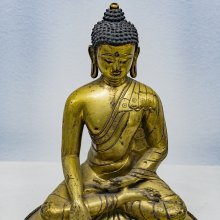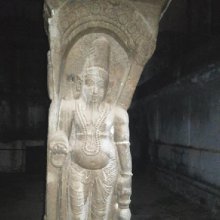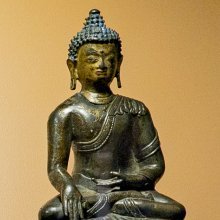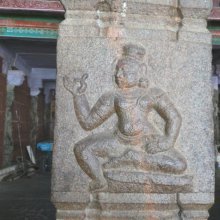Touching, Touch, Touched: 2 definitions
Introduction:
Touching means something in Hinduism, Sanskrit. If you want to know the exact meaning, history, etymology or English translation of this term then check out the descriptions on this page. Add your comment or reference to a book if you want to contribute to this summary article.
Images (photo gallery)
(+48 more images available)
In Hinduism
Natyashastra (theatrics and dramaturgy)
Source: Shodhganga: Elements of Art and Architecture in the Trtiyakhanda of the Visnudharmottarapurana (natya)(The act of) Touching is associated with Haṃsapakṣa-hasta: one of the twenty-two Single-hand Gestures (in Indian Dramas) (known as asaṃyuktahastas), according to the Viṣṇudharmottarapurāṇa, an ancient Sanskrit text which (being encyclopedic in nature) deals with a variety of cultural topics such as arts, architecture, music, grammar and astronomy.—The word haṃsapakṣa denotes the wings of a swan. In the Viṣṇudharmottarapurāṇa, this hand posture is described as one where the little finger of the hand is lifted crookedly and the thumb is bent. [...] According to the Viṣṇudharmottarapurāṇa, some activities like touching, anointing and shampooing are denoted through this hastamudrā.

Natyashastra (नाट्यशास्त्र, nāṭyaśāstra) refers to both the ancient Indian tradition (shastra) of performing arts, (natya—theatrics, drama, dance, music), as well as the name of a Sanskrit work dealing with these subjects. It also teaches the rules for composing Dramatic plays (nataka), construction and performance of Theater, and Poetic works (kavya).
Yoga (school of philosophy)
Source: ORA: Amanaska (king of all yogas): A Critical Edition and Annotated Translation by Jason BirchThe (Feeling of) Touch is denoted by the Sanskrit term Sparśa, according to the Amanaska Yoga treatise dealing with meditation, absorption, yogic powers and liberation.—Accordingly, as Īśvara says to Vāmadeva: “[...] [Now], I shall define the nature of that highest, mind-free absorption which arises for those devoted to constant practice. [...] In four days and nights, there is no doubt that the best of Yogins knows [the feeling of] touch (sparśa) even from afar, by virtue of the state of absorption. [...]”.
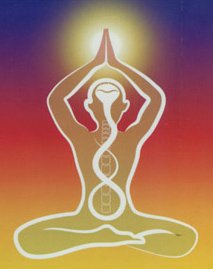
Yoga is originally considered a branch of Hindu philosophy (astika), but both ancient and modern Yoga combine the physical, mental and spiritual. Yoga teaches various physical techniques also known as āsanas (postures), used for various purposes (eg., meditation, contemplation, relaxation).
See also (Relevant definitions)
Full-text (+3257): Sparsha, Sparshana, Samsparsha, Samsprishta, Duhsparsha, Sprishta, Sprish, Sparshaka, Vyomasprish, Prikta, Asparsha, Hridayangama, Sprishti, Asprishya, Sparshamani, Sparshaniya, Prikti, Upasparsha, Phassa, Ghritasprish.
Relevant text
Search found 448 books and stories containing Touching, Touch, Touched; (plurals include: Touchings, Touches, Toucheds). You can also click to the full overview containing English textual excerpts. Below are direct links for the most relevant articles:
Manusmriti with the Commentary of Medhatithi (by Ganganatha Jha)
Verse 5.84 < [Section IX - Other forms of Impurity]
Verse 8.358 < [Section XLVI - Adultery]
Verse 8.357 < [Section XLVI - Adultery]
Bhagavati-sutra (Viyaha-pannatti) (by K. C. Lalwani)
Part 1 - On the distance at Sun-rise and Sun-set < [Chapter 6]
Part 4 - On the touch between molecules of matter < [Chapter 7]
Part 2 - On space limit and sundry items < [Chapter 6]
The Padma Purana (by N.A. Deshpande)
Chapter 52 - Rules for Sipping Water < [Section 3 - Svarga-khaṇḍa (section on the heavens)]
Chapter 20 - The Importance of Gaṇḍakī < [Section 5 - Pātāla-Khaṇḍa (Section on the Nether World)]
Chapter 17 - The Importance of Water Flowing from Viṣṇu’s Feet < [Section 4 - Brahma-khaṇḍa (Section on Brahman)]
Practicing Insight on Your Own (by Acharn Thawee Baladhammo)
The Second Step < [Chapter 1]
Standing - Walking Meditation < [Chapter 1]
Brihad Bhagavatamrita (commentary) (by Śrī Śrīmad Bhaktivedānta Nārāyana Gosvāmī Mahārāja)
Verse 1.7.144 < [Chapter 7 - Pūrṇa (pinnacle of excellent devotees)]
Verse 2.4.124 < [Chapter 4 - Vaikuṇṭha (the spiritual world)]
Verse 2.3.151 < [Chapter 3 - Bhajana (loving service)]
Apastamba Dharma-sutra (by Āpastamba)
Related products
(+42 more products available)

